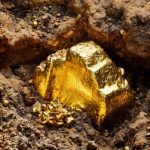Uses of gold
Uses of gold
Gold, when used as a coloring agent in cranberry glass, produces a deep, intense red color.
In photography, gold toners are used to change the color of black and white silver bromide prints to brown or blue colors or to increase their stability. Gold toners used in brown prints produce red colors. Kodak published formulas for several types of gold toner that use gold as chloride.
Gold is a good reflector of electromagnetic radiation such as infrared and visible light as well as radio waves. It is used for protective coatings on many artificial satellites, in infrared shielding plates in astronaut thermal suits and helmets, and in electronic warfare aircraft such as the EA-6B Prowler. Gold. is used as a reflective layer in some high-end CDs.
Cars may use gold for heat protection. McLaren uses gold leaf in the engine compartment of its F1 model.
Gold can be made so thin that it appears translucent. In some airplane cabin windows, it is used for defrosting or anti-icing by passing electricity through it. The heat from the gold resistance is enough to prevent ice from forming.
The gold is attacked and dissolved in alkaline solutions of potassium or sodium cyanide to form salt gold cyanide – a technique used in the extraction of metallic gold from ore in the cyanide process. Gold cyanide is the electrolyte used in commercial gold plating on base metals and electroforming.
Gold chloride (chloroauric acid) solutions are used to make colloidal gold by reduction with citrate or ascorbate ions. Gold chloride and gold oxide are used to make cranberry or red glasses, which, like colloidal gold suspensions, contain spherical gold nanoparticles of uniform size.
When gold is dispersed in nanoparticles, it can act as a heterogeneous catalyst for chemical reactions.
- Using gold toners in photo printing to change black and white to brown or blue colors
- Making a Gold Compact Disc
- Heterogeneous Gold Catalysis in the form of nanoparticles



